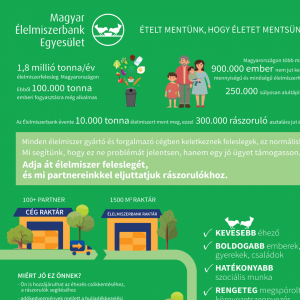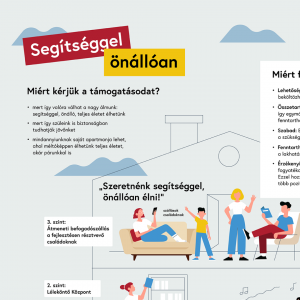CASE STUDIES, INFOGRAPHICS*
More than 20 teams have participated in Impact Academy trainings so far since its launch in 2018. During the six-month, complex development process, the organisations built their own impact chain, developed their measurement system, and with the support of experts, completed their infographics depicting their impact. Here are some exciting stories, that we would like to share with you:
*
CASE STUDIES
x
Igazgyöngy Foundation works for the change and integration of the life chances of children and families living in generational poverty in the Berettyóújfalu micro-region, in the Eastern part of Hungary. In the case study, we present the complex development process that the foundation went through during the Impact Academy Program and we can read about the main outcomes as well.
‘ Operating an impact measurement system helps a lot to have a realistic picture of ourselves and to be transparent inside and out – so we’re really looking forward to the first measurement results. ‘
Read the Igazgyöngy case study.
x
The IttaSzezon! team has developed an innovative, online platform to bring primary and small-farmers together with city dwellers who care to eat and drink healthy, fresh, original, delicious and homemade food. The founders decided to take part in the training because
‘ On the one hand we were looking for a community who shares the same values with us, on the other hand it seemed like a great opportunity to rethink the overall strategy, priorities, business goals and directions of our brand new organization. ‘
They talk about these experiences and the development process in this case study.
x
The mission of the Heroes for Responsible Dining Foundation is to promote sustainable and healthy eating. They believe that with environmentally friendly gastronomic solutions we can make our meals greener and healthier, thus doing good for ourselves and our environment.
‘ The foundation is active on many fronts and we wanted to make these activities visible and known. The social impact is not enough to measure, but in order for the world to see the impact of the organization, we need to find a way to communicate properly, including the developed impact chain and infographics. ‘
Fore more details read the case study (available only in Hungarian language).
*
INFOGRAPHICS
x
The aim of IttaSzezon! to help farmers to be able to sell large quantities of product in a short period of time in one shipment, so that they can spend most of their time on their farms. In this way, primary and small-farmers can build up a sustainable family farm. This is what they are showing us on their infographics.
Check out the IttaSzezon! infographics.
*
The Women For Women Together Against Violence Association (NANE) has been working to eradicate intimate partner and domestic violence against women and children since 1994, at individual, community and societal levels.
Their infographics shows how widely their activities help stakeholders.
Take a look at the NANE’s infographics (available only in Hungarian)
*
What happens if your child misses school due to a long illness? Who helps him keeping up? And how does his/her mood changes during this time?
This is shown in the infographics of the KórházSuli. The KórházSuli Foundation was established to support the educational and social rehabilitation of sick children in a unique training system with the support of contemporary helpers (high school and university students).
Take a look at KórházSuli’s infographics (available only in Hungarian).
*
The main mission of the Symbiosis Foundation, established in 1999, is to educate and support the social integration of disadvantaged people who are marginalized, especially those with intellectual and multiple disabilities.
A complex service model has been built for this, the main pillars of whichthey would like to present in a simple and understandable way in the infographics.
Take a look at the infographics of Symbiosis (available only in Hungarian).
*
More than 1.8 million tons of food go to trash every year in Hungary, while hundreds of thousands live with starvation. The aim of the Hungarian Food Bank Association is to create a connection between the food surpluses accumulating in our country and those in need.
In their infographics, they would like to show how the surplus food produced in companies can be used for good purposes.
Take a look at the infographics of the Food Bank Association (available only in Hungarian).
*
The principle of the Nem Adom Fel (I Don’t Give Up) Foundation has remained the same since 2005: “Everyone is rich enough to help others!”. Their primary goal is to develop a “don’t give up spirit” in disadvantaged families and individuals. Many of their activities serve this purpose, including accredited employment programs, the Spiritual Autism Program, Nemadomfel (Don’t give up) Houses, integrated camps, sensitization trainings, and the Nem Adom Fel Café House, which has been operating since 2016.
Check out the Nem Adom Fel infographics (available only in Hungarian).








